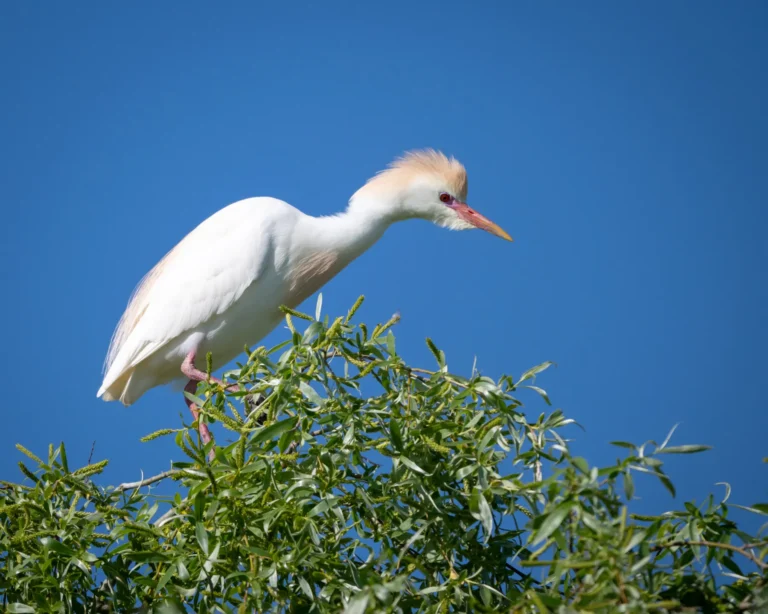
Cattle Egret

Description and how to observe Cattle Egret:
The Cattle Egret is a medium-sized bird, about 45-50 cm tall with a wingspan of up to 90 cm. In the breeding season, it has a pristine white plumage with orange accents on the head, breast and back. Otherwise it is completely white. It is easily spotted in the Danube Delta, especially in open wetlands, near lakes, canals and meadows, but also around domestic animals - hence its name.
What it feeds on Cattle Egret:
Its diet consists mainly of insects - especially grasshoppers, crickets, beetles and flies. It also occasionally eats frogs, lizards or small fish. Its unique feeding style - following cattle - gives it access to a rich source of insects.
Threats:
Although it is an adaptable and expanding species, the cattle egret faces threats such as the destruction of natural habitats (drying up of wetlands), water pollution and the use of pesticides that reduce insect populations. Climate change can also affect migration routes and migration times.
Ecological role:
More information about Bubulcus ibis:
The Cattle Egret is a species native to Africa, but it has spread rapidly to all continents, including Europe, thanks to its excellent adaptability. It was first spotted in Romania in the 1960s and is now a common sight in the Danube Delta.
Discover now the most beautiful places in the Danube Delta!
In the following pages, you will find detailed information about:
- Top tourist destinations: Traditional villages, nature reserves, tourist trails and much more.
- Activities and attractions: Everything you need to know about boating, fishing, bird watching, cycling and other activities.
- Accommodation and catering: Accommodation to suit all budgets and restaurants serving traditional cuisine.




